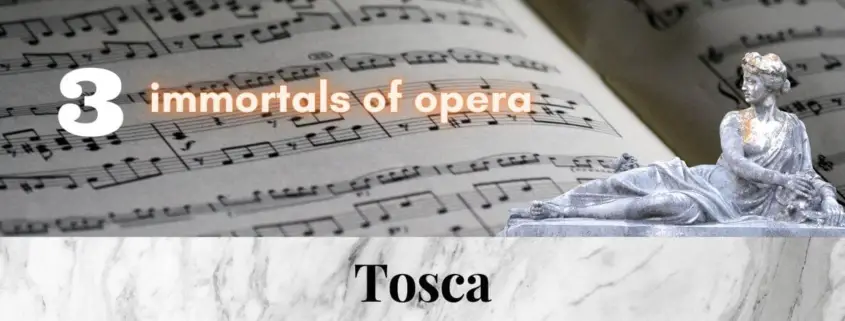3 immortal pieces from the opera TOSCA by Puccini – with the best interpretations from YouTube (Hits, Best of)
Love, death and terror. Everything is in this opera. Puccini created three great portraits of roles, with gripping duets and famous arias that made “Tosca” one of the most performed operas.
Recondita armonia
Cavaradossi paints a picture of the Madonna in the church. He has added to it the features of Tosca and a second unknown beauty who often visits the church. He is in thoughts of his beloved Floria Tosca.
“Recondita armonia” is a highlight of the opera and is played early in the first act. Like Verdi, Puccini occasionally made fun of punishing the notoriously late comers.
Jussi Björling’s voice was of outstanding quality. It possessed a silvery timbre and its highs were of superior quality.
Recondita armonia – Björling/Leinsdorf
Vissi d’arte – Puccini changes the face of Tosca
Scarpia sentences Cavaradossi to death by firing squad the next morning at Castel Sant’Angelo and offers Tosca a new deal: her lover’s life for one night with her. Tosca offers money, but Scarpia insists on his demand.
With the aria “Vissi d’arte,” Puccini changes Tosca’s personality for the audience. The superficial, jealous actress becomes a woman whose suffering moves the listener. She reacts with disbelief. Why does God punish her, who leads a pious life? Puccini writes at the beginning of the aria “Pianissimo, dolcissimo, con grande sentimento.” With the verse “Sempre con fé” the mood changes and the singer has to change a beautiful melodious and intimate singing. In a religious mood the piece ends with the climax of “Perché, perché, Signor” which ends in high B.
Maria Callas was at the vocal peak of her career in 1953. Her Vissi d’arte had the brilliance of the voice and the empathy of the actress. Victor de Sabata’s recording was made with tremendous effort and is one of the best opera recordings ever made.
Vissi d’arte – Callas
“E lucevan le stelle“
Cavaradossi’s execution is coming up and he thinks back to Tosca with melancholy. It is a great aria written in typical Puccini style; while Cavaradossi sings a monotonous passage in the first part of the piece, he is accompanied by an expressive melody from the clarinet. At the beginning of the aria, Cavaradossi describes how memories of visions, smells, and feelings now twinkle like distant stars. Puccini gives the singer the opportunity to immerse these feelings in different tonal colors. The following passage “O dolci baci, o languide carezze”, which alludes to past nights of love, must be sung with warmth and tenderness, until with “Svani sempre” the dark, hopeless thoughts dominate and finally in “Muoio disparato” the despair bursts out of him. After the aria, Puccini instructs the tenor to burst into tears.
Hear and see Placido Domingo in a “live film” shot in the original locations described by the composer. At noon in Sant’ Andrea della Valle, the same evening in Palazzo Farnese and the next morning in Castel Sant’Angelo. The singers were connected via monitors to the conductor and the orchestra, who played in a concert hall.
E lucevan le stelle – Domingo






Leave a Reply
Want to join the discussion?Feel free to contribute!